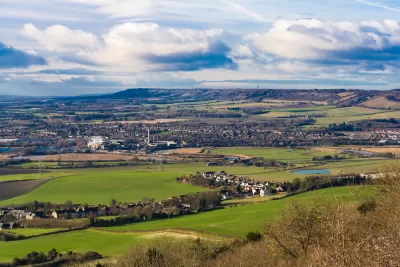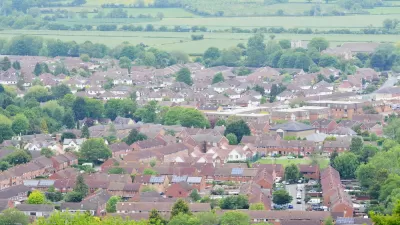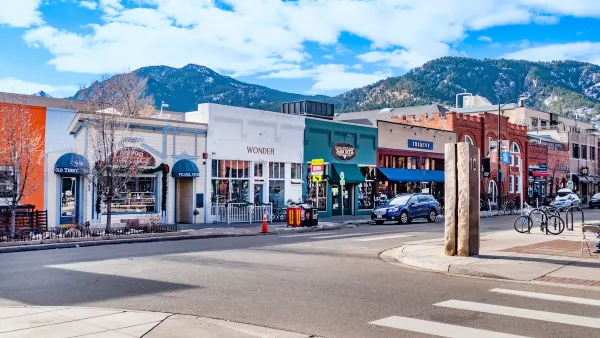Touted as a solution to mindless suburban expansion, the vast green belts around U.K. cities create new challenges. Among them: less affordable housing, longer commutes, and dubious environmental benefits. What happens if these spaces get developed?

A traveler out of London passes miles of suburbs that give way to rolling meadows, hedgerows, country churches, and sheep. This happens fairly quickly. The U.K. has remained relatively light on sprawl due to the green belts around its major cities, great swaths of classic countryside kept free from new development “except in very special circumstances.”
Despite its advantages, the green belt comes with some nasty side effects. As Rowan Moore observes, the green belt contributes to a lack of quality housing, lengthens commutes, and provides little access to city residents. The green belt is too close to the city to preserve the character of rural Britain, and not finely-tuned enough to serve citizens as a park. Its residents are seen as affluent gentry who rig the real estate market in their favor.
Continuing policy protects green belt status unilaterally. From the article: “[The green belt is] part of English, if not British, national identity, protected by the shade of William Blake. It is brandished at party conferences and makes tabloid headlines, with frequent references to the ‘concreting over’ of a green and pleasant land.”
Moore outlines an ongoing debate between green belt supporters and its detractors, some of whom desire large-scale development of the land in question. The article advocates a middle road between wholesale development and the current protectionist policy. Of calls to rescind the green belt, Moore writes, “Something more is required, which is the ability to plan positively, to create new places as well as protect old ones, a skill this country had until relatively recently.”
FULL STORY: Is it time to rethink Britain's green belt?

Planetizen Federal Action Tracker
A weekly monitor of how Trump’s orders and actions are impacting planners and planning in America.

Maui's Vacation Rental Debate Turns Ugly
Verbal attacks, misinformation campaigns and fistfights plague a high-stakes debate to convert thousands of vacation rentals into long-term housing.

San Francisco Suspends Traffic Calming Amidst Record Deaths
Citing “a challenging fiscal landscape,” the city will cease the program on the heels of 42 traffic deaths, including 24 pedestrians.

Defunct Pittsburgh Power Plant to Become Residential Tower
A decommissioned steam heat plant will be redeveloped into almost 100 affordable housing units.

Trump Prompts Restructuring of Transportation Research Board in “Unprecedented Overreach”
The TRB has eliminated more than half of its committees including those focused on climate, equity, and cities.

Amtrak Rolls Out New Orleans to Alabama “Mardi Gras” Train
The new service will operate morning and evening departures between Mobile and New Orleans.
Urban Design for Planners 1: Software Tools
This six-course series explores essential urban design concepts using open source software and equips planners with the tools they need to participate fully in the urban design process.
Planning for Universal Design
Learn the tools for implementing Universal Design in planning regulations.
Heyer Gruel & Associates PA
JM Goldson LLC
Custer County Colorado
City of Camden Redevelopment Agency
City of Astoria
Transportation Research & Education Center (TREC) at Portland State University
Jefferson Parish Government
Camden Redevelopment Agency
City of Claremont





























